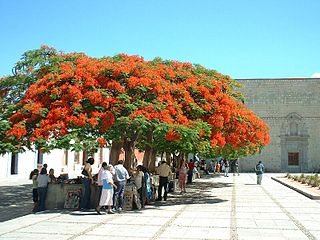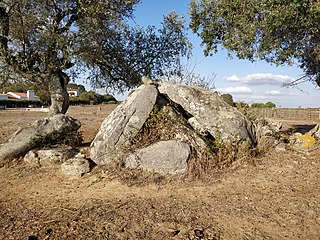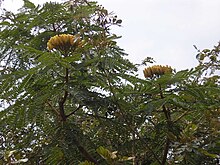
Caesalpinioideae is a botanical name at the rank of subfamily, placed in the large family Fabaceae or Leguminosae. Its name is formed from the generic name Caesalpinia. It is known also as the peacock flower subfamily. The Caesalpinioideae are mainly trees distributed in the moist tropics, but include such temperate species as the honeylocust and Kentucky coffeetree. It has the following clade-based definition:
The most inclusive crown clade containing Arcoa gonavensisUrb. and Mimosa pudicaL., but not Bobgunnia fistuloides(Harms) J. H. Kirkbr. & Wiersema, Duparquetia orchidaceaBaill., or Poeppigia proceraC.Presl

The Ionic order is one of the three canonic orders of classical architecture, the other two being the Doric and the Corinthian. There are two lesser orders: the Tuscan, and the rich variant of Corinthian called the composite order. Of the three classical canonic orders, the Corinthian order has the narrowest columns, followed by the Ionic order, with the Doric order having the widest columns.

Vicia faba, commonly known as the broad bean, fava bean, or faba bean, is a species of vetch, a flowering plant in the pea and bean family Fabaceae. It is widely cultivated as a crop for human consumption, and also as a cover crop. Varieties with smaller, harder seeds that are fed to horses or other animals are called field bean, tic bean or tick bean. Horse bean, Vicia faba var. equinaPers., is a variety recognized as an accepted name. This legume is very common in Southern European, Northern European, East Asian, Latin American and North African cuisines.

The Fea's petrel is a small seabird in the gadfly petrel genus, Pterodroma. It was previously considered to be a subspecies of the soft-plumaged petrel, but they are actually not closely related at all. However, P. feae is very closely related to Zino's petrel and Desertas petrel, two other species recently split from P. mollis. The gadfly petrels are named for their speedy weaving flight, as if evading horseflies. The flight action is also reflected in the genus name Pterodroma, from Ancient Greek pteron, "wing" and dromos, " runner". This species is named after the Italian zoologist Leonardo Fea (1852-1903).

Cheikh Anta Diop was a Senegalese historian, anthropologist, physicist, and politician who studied the human race's origins and pre-colonial African culture. Diop's work is considered foundational to the Afrocentrist movement, though he himself never used the term. The questions he posed about cultural bias in scientific research contributed greatly to the postcolonial turn in the study of African civilizations.

Cheikh Anta Diop University, also known as the Cheikh Anta Diop University of Dakar, is a university in Dakar, Senegal. It is named after the Senegalese physicist, historian and anthropologist Cheikh Anta Diop and has an enrollment of over 60,000.

Ful medames, or simply fūl, is a stew of cooked fava beans served with olive oil, cumin, and optionally with chopped parsley, garlic, onion, lemon juice, chili pepper, and other vegetable, herb, and spice ingredients. Ful medames is traditionally made in and served out of a large metal jug. It is notably a staple food in Egypt and is considered a national dish, especially in the northern cities of Cairo and Gizah. Fava beans can sometimes be also found in other cuisines in the Middle East, and Africa, though cooked differently.

Nepenthes mollis, or the velvet pitcher-plant, is a tropical pitcher plant species natives to Kalimantan, Borneo. It used to be known only from a single dried herbarium specimen and is the sole recognised species in the genus Nepenthes of which the pitchers are unknown. In 2019 Global Wildlife Conservation announced the rediscovery of the species.

Giuseppe "Pippo" Fava was an Italian writer, investigative journalist, playwright, and Antimafia activist who was killed by the Mafia. He was the founder of the I Siciliani, a monthly magazine. His motto in life was "Is there any use in living if you don't have the courage to fight?"

Dimorphandra is a genus of legume in the family Fabaceae, subfamily Caesalpinioideae.

Pentaclethra is a small genus of trees from the tropics. They are flowering plants in the family Fabaceae. It belongs to the mimosoid clade of the subfamily Caesalpinioideae.

Astilbin is a flavanonol, a type of flavonoid. Astilbin is the (2R-trans)-isomer; neoisoastilbin is the (2S-cis)-isomer and isoastilbin is the (2R-cis)-isomer.

Mole, from Nahuatl mōlli, meaning "sauce", is a traditional sauce and marinade originally used in Mexican cuisine. In contemporary Mexico the term is used for a number of sauces, some quite dissimilar, including mole amarillo or amarillito, mole chichilo, mole colorado or coloradito, mole manchamantel or manchamanteles, mole negro, mole rojo, mole verde, mole poblano, mole almendrado, mole michoacano, mole prieto, mole ranchero, mole tamaulipeco, mole xiqueno, mole pipián, mole rosa, mole blanco, chimole, guacamole and huaxmole.
The Mirador State Park is a state park in the state of Maranhão, Brazil. It protects the headwaters of an important source of water for communities in the state, including the state capital. Its own protection from illegal logging, slash-and-burning, grazing and hunting is underfunded.

Fliegerstaffel 20 was a Swiss Air Force squadron equipped with Hawker Hunter aircraft. Their home base at the dissolution was the military airfield at Mollis. The squadron carried as its coat of arms a black Bison on a yellow background. The writing “Fl St 20” below the Bison appeared during the squadron's history.

The Anta de Agualva, also known as the Anta do Carrascal, is a megalithic dolmen situated in an urban area of Agualva-Cacém in the municipality of Sintra, in the Lisbon District of Portugal. First identified by Carlos Ribeiro in 1875, the dolmen has recently been restored and can be easily visited.

The Antas da Valeira are two Chalcolithic dolmen, or burial chambers, about 100 metres apart, close to the village of Nossa Senhora da Graça do Divor in the Évora district of the Alentejo region of Portugal. Situated in a farm field about one kilometer from the Vale Maria do Meio Cromlech and ten kilometers from the notable megalithic complex of the Almendres Cromlech, these dolmen are among numerous megalithic sites identified in the Évora area. These two monuments have yet to be studied by archaeologists and are in a poor condition.

The Antas do Barrocal, also known as the Antas Herdade do Barrocal, are a set Neolithic dolmens, or megalithic funeral chambers, at Monte do Barrocal, in the parish of Nossa Senhora da Tourega, in the Évora District of the Alentejo region of Portugal. They are in an area with a high concentration of megalithic sites. Nine have been identified but only two are more than remnants and only Number 1 can be visited. This has been classified as a National Monument since 1910.


















